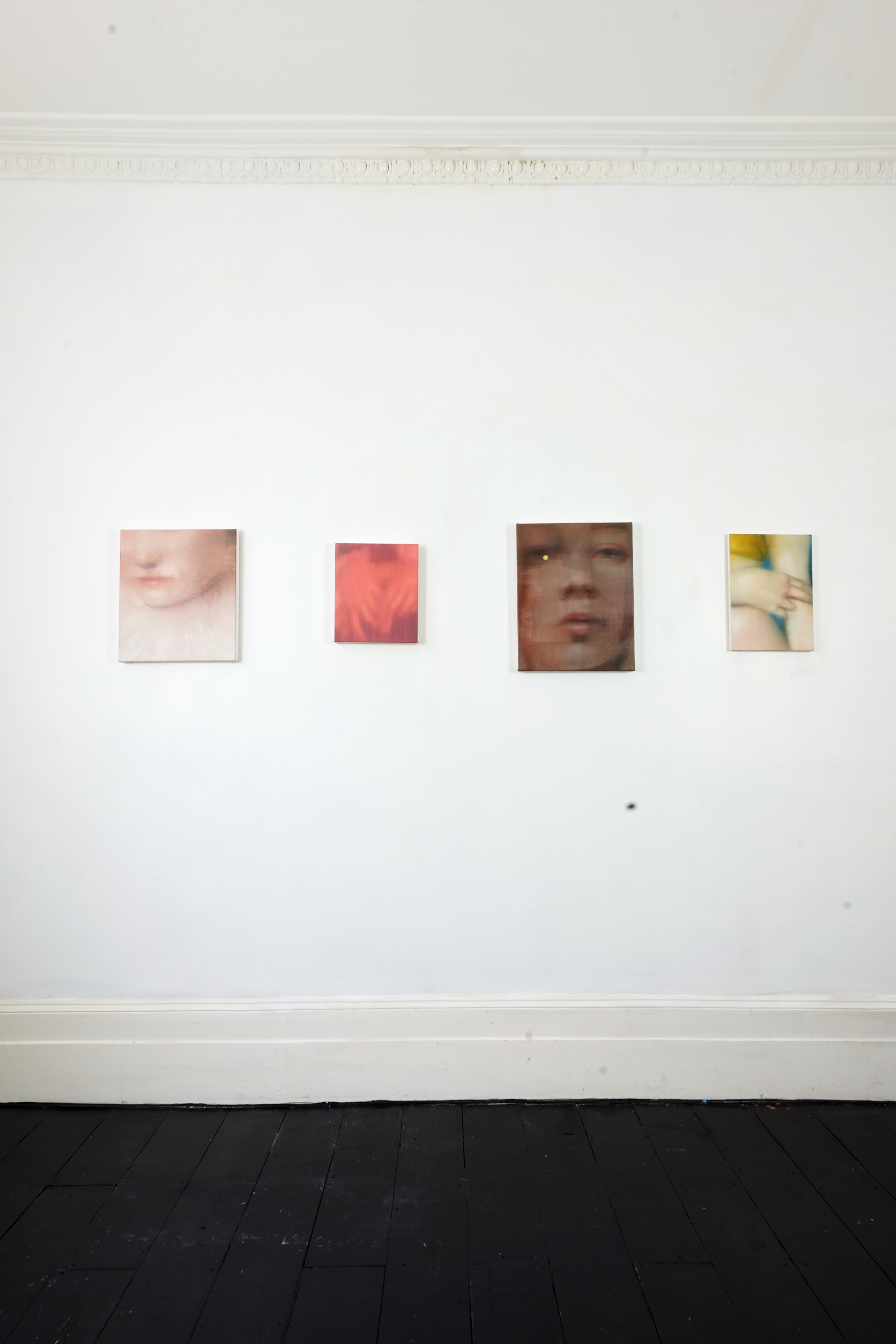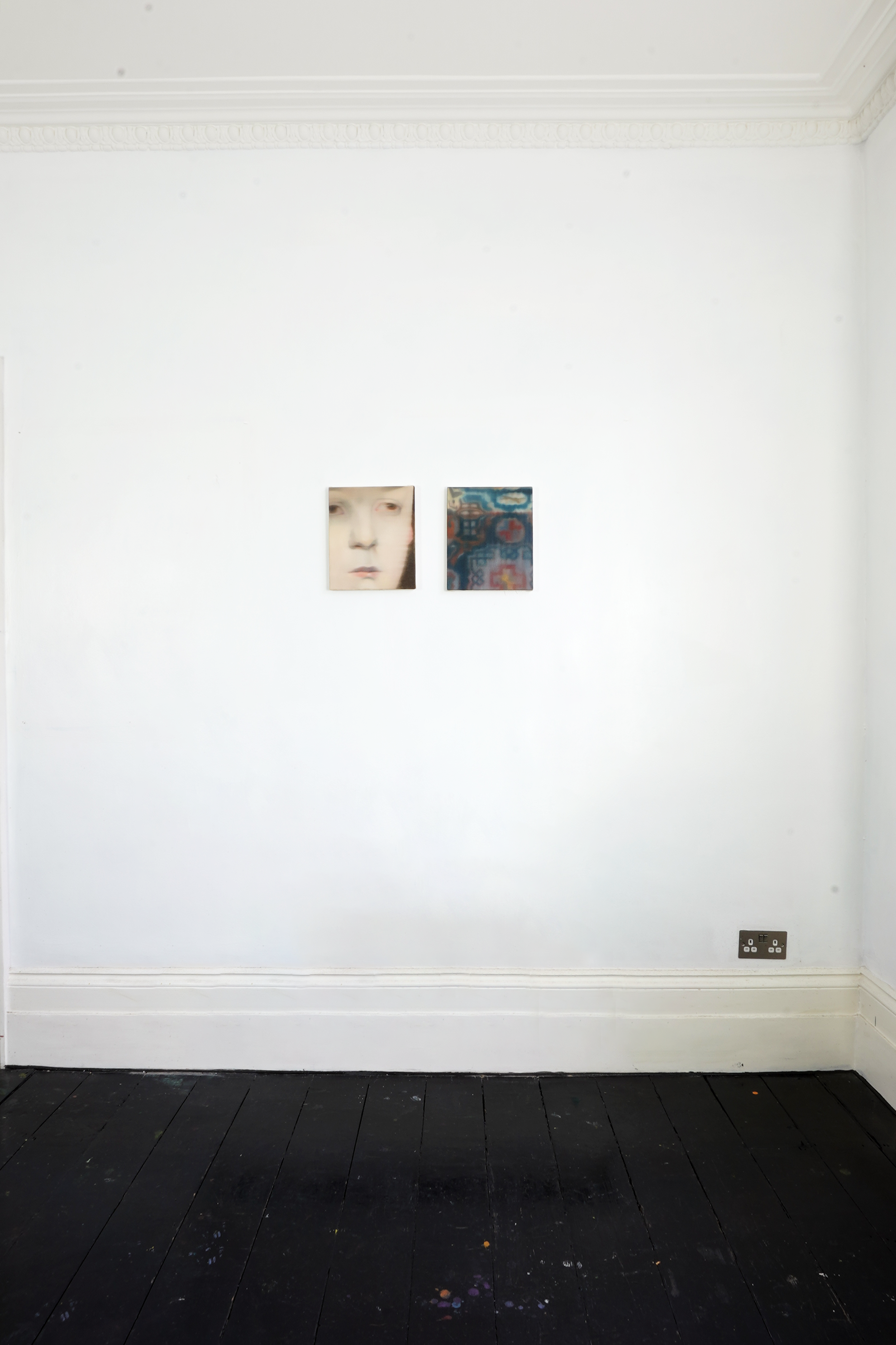JOHANNA BATH
The ceaseless loss of the present permeates our every moment. Memory is unreliable, a taciturn rendition of a technicolour present. To linger on this loss becomes a fool’s errand, time seems to slip away at increasing speed as it goes on. As people, we’ve become devoted to preserving the present, photography, and video usurping memory as a reliable narrator. Precise moments skitter at the edges of the mind’s eye, vanishing when addressed head-on, an ever-present buzzing disrupting attempts to transfer their stillness. Memory, though fallible, has its charm, wistful even in its melancholy, our tendency to romanticise the past tinging everything in a rosy hue. Johanna Bath’s blurred oil paintings capture this feeling, as past and present intertwine in intimate studies of faces, hands and soft interiors.
During her time in London, Bath visited London’s Galleries, drawn to the old masters such as Holbein, or Velasquez. Working intuitively Bath collected cropped images of these paintings that form the base for her compositions. Despite the decades between these paintings and the artist’s, Bath was struck by their timelessness. This is exacerbated by Bath’s cropping of the original compositions, where time becomes malleable, and past and present are connected. The recontextualization by Bath removes the portraits from a position of authority over the viewer to a more personable level.
Despite this Bath’s portraits have an omniscience to them, the pervasiveness of their stare is seductive, creating a knowing intimacy with the on-looker. The viewer is drawn into the painting as the scale of the portraits accentuates their ethereal quality. Sheer mesh-like layers of paint create a feeling of impermanence in the work, in some varnish is applied to wet paint, making the surface unstable and aged. In particular paintings, this deterioration makes the work so phantom-like that the eye slips over the surface. The artist then employing markers to allow the eye an anchor within the painting. This instability runs through the paintings in a delightful shudder, the series a love letter the language of paint, and its continued importance in contemporary art.














